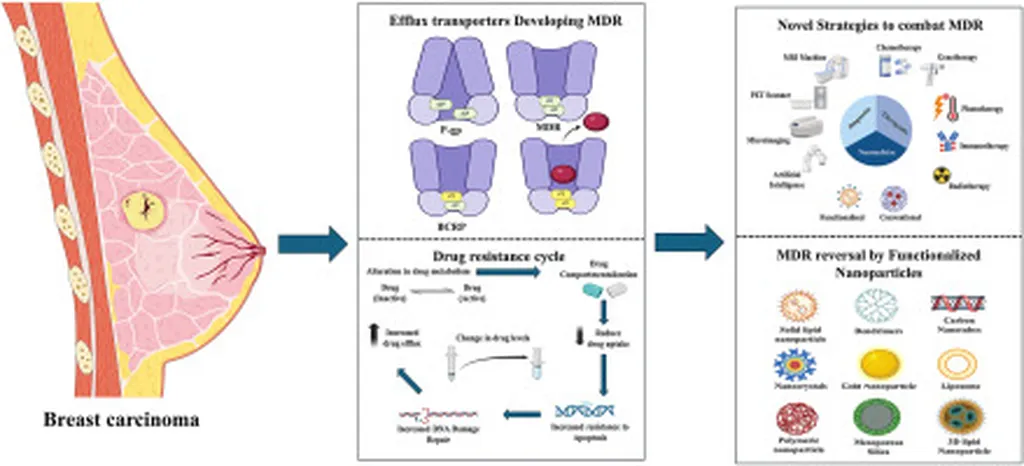In the ever-evolving landscape of biomedical engineering, a groundbreaking study has emerged from the University of Groningen, promising to revolutionize the way we think about breast implants and cancer cell interactions. Led by Lisa E. Tromp, a researcher at the University Medical Center Groningen, this innovative work delves into the intricate world of cell-material interactions, offering a glimpse into a future where implants can be designed to promote healthy cell growth while inhibiting cancerous cells.
The study, published in Bioactive Materials, which translates to ‘Actieve Materialen’ in Dutch, focuses on the interplay between breast epithelial cells and breast cancer cells with various material properties. By employing a silicone-based high-throughput screening method known as Double Orthogonal Gradients (DOGs), Tromp and her team investigated how topography, stiffness, and wettability influence cell behavior.
The results are nothing short of fascinating. The researchers found that introducing surface topography significantly decreased the proliferation rates of both healthy and cancerous cells. Moreover, wettability emerged as a dominant factor, affecting cell adhesion, proliferation, and cluster formation. “We identified specific regions where healthy cells outperformed cancer cells in proliferation,” Tromp explained. “This opens up exciting possibilities for designing implant surfaces that can favor healthy cell growth while inhibiting tumor formation.”
The implications of this research are vast, particularly in the realm of breast implants. Currently, silicone breast implants are widely used, but they come with risks, including capsular contracture and, in rare cases, cancer. By understanding how different material properties interact with healthy and cancerous cells, researchers can develop implants that are not only safer but also more effective in promoting tissue integration and healing.
But the potential applications don’t stop at breast implants. This research could pave the way for a new generation of medical devices that can actively influence cellular behavior. From regenerative medicine to implantable devices, the possibilities are endless. Imagine a future where implants can be tailored to specific cellular responses, promoting healing and preventing complications.
Tromp’s work is a testament to the power of interdisciplinary research. By combining materials science, biology, and engineering, she and her team have opened up new avenues for exploration. “Our goal is to create materials that can actively direct cell behavior,” Tromp said. “This is just the beginning, and we’re excited to see where this research takes us.”
As we look to the future, it’s clear that the field of biomedical engineering is on the cusp of a major shift. With researchers like Lisa E. Tromp at the helm, we can expect to see significant advancements in the coming years. The study published in Bioactive Materials is a significant step forward, offering a roadmap for developing next-generation medical devices that can actively influence cellular behavior. The potential commercial impacts are enormous, with implications for the energy sector as well, as researchers explore new materials and technologies for energy storage and conversion. The future of biomedical engineering is bright, and it’s driven by innovative research like this.

